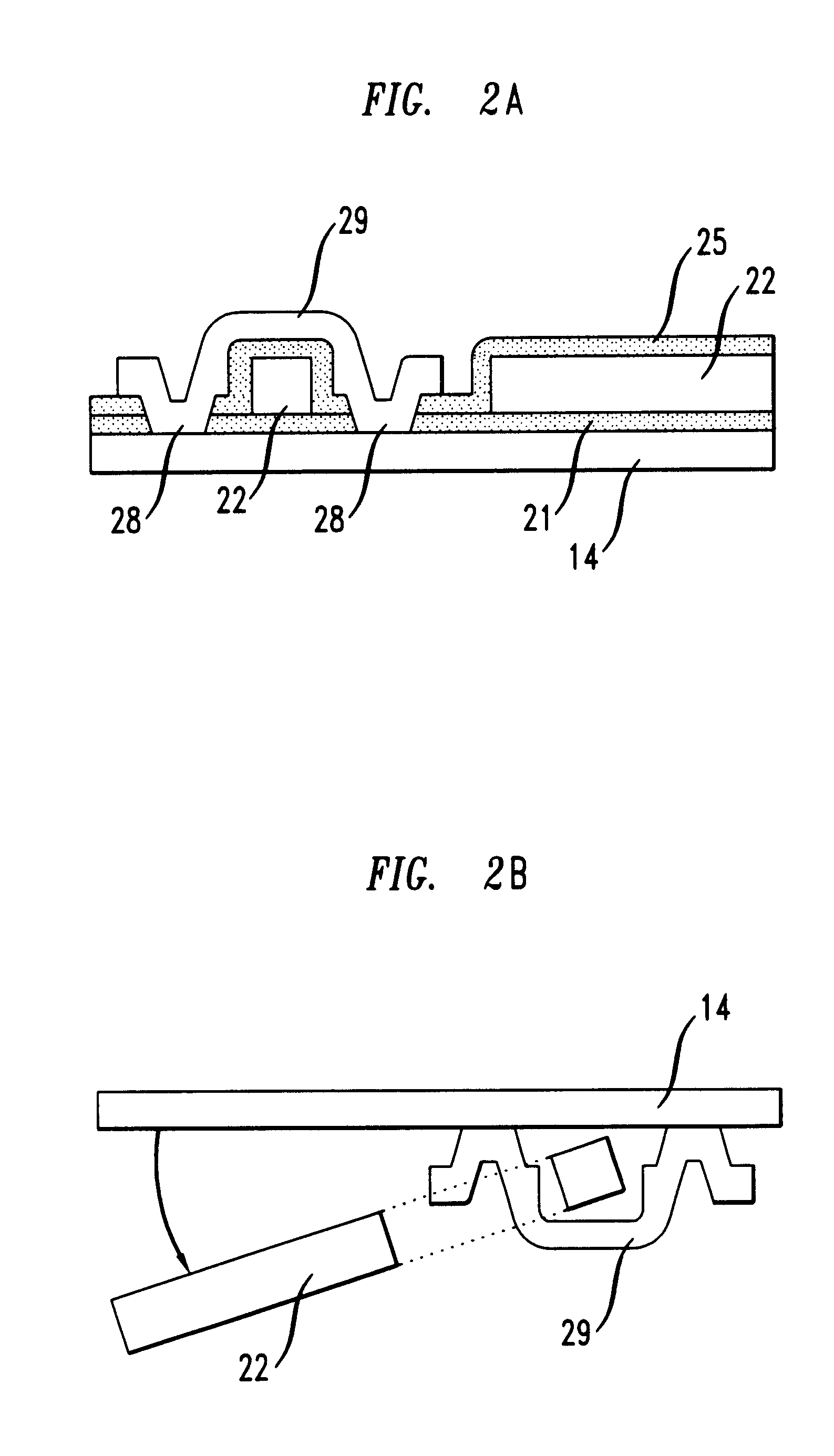Process for fabricating micromechanical devices
a micromechanical device and process technology, applied in the direction of relays, generators/motors, snap-action arrangements, etc., can solve the problems of high vertical resolution (i.e. resolution in the direction normal to the substrate surface) that is more difficult to obtain than planar resolution, and the device will not operate in the intended manner
- Summary
- Abstract
- Description
- Claims
- Application Information
AI Technical Summary
Problems solved by technology
Method used
Image
Examples
Embodiment Construction
In this example, a hinged plate was released according to the process of the present invention. This example is described with reference to FIG. 5. Specifically, substrates 101 with a plurality of structures 105 having hinged plates (not shown) similar to those depicted in FIG. 3 were placed in a chip-carrier 110 and locked into position. The chip-carrier 110 was seated onto a chamber 120 such that the substrate was suspended in the chamber 120 face down. The chamber 120 was affixed to a base 135. The base had an inlet 140 in fluid communication with the chamber inlet 125. The base also had a drain 145 for draining away the overflow from the chamber 120. The chamber 120 was equipped with an inlet 125 and an overflow 130 for flowing fluids through the chamber 120. Low frequency (i.e. 50-60 Hz in the vertical direction) agitation was provided to the chamber 120. For these examples the vertical displacement was varied between about 100 .mu.m and 450 .mu.m.
The shaker control was turned ...
PUM
| Property | Measurement | Unit |
|---|---|---|
| frequency | aaaaa | aaaaa |
| vertical displacement | aaaaa | aaaaa |
| frequency | aaaaa | aaaaa |
Abstract
Description
Claims
Application Information
 Login to View More
Login to View More - R&D
- Intellectual Property
- Life Sciences
- Materials
- Tech Scout
- Unparalleled Data Quality
- Higher Quality Content
- 60% Fewer Hallucinations
Browse by: Latest US Patents, China's latest patents, Technical Efficacy Thesaurus, Application Domain, Technology Topic, Popular Technical Reports.
© 2025 PatSnap. All rights reserved.Legal|Privacy policy|Modern Slavery Act Transparency Statement|Sitemap|About US| Contact US: help@patsnap.com



